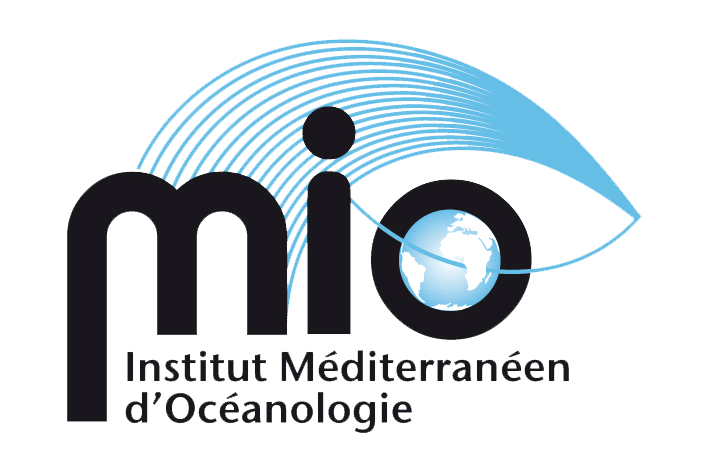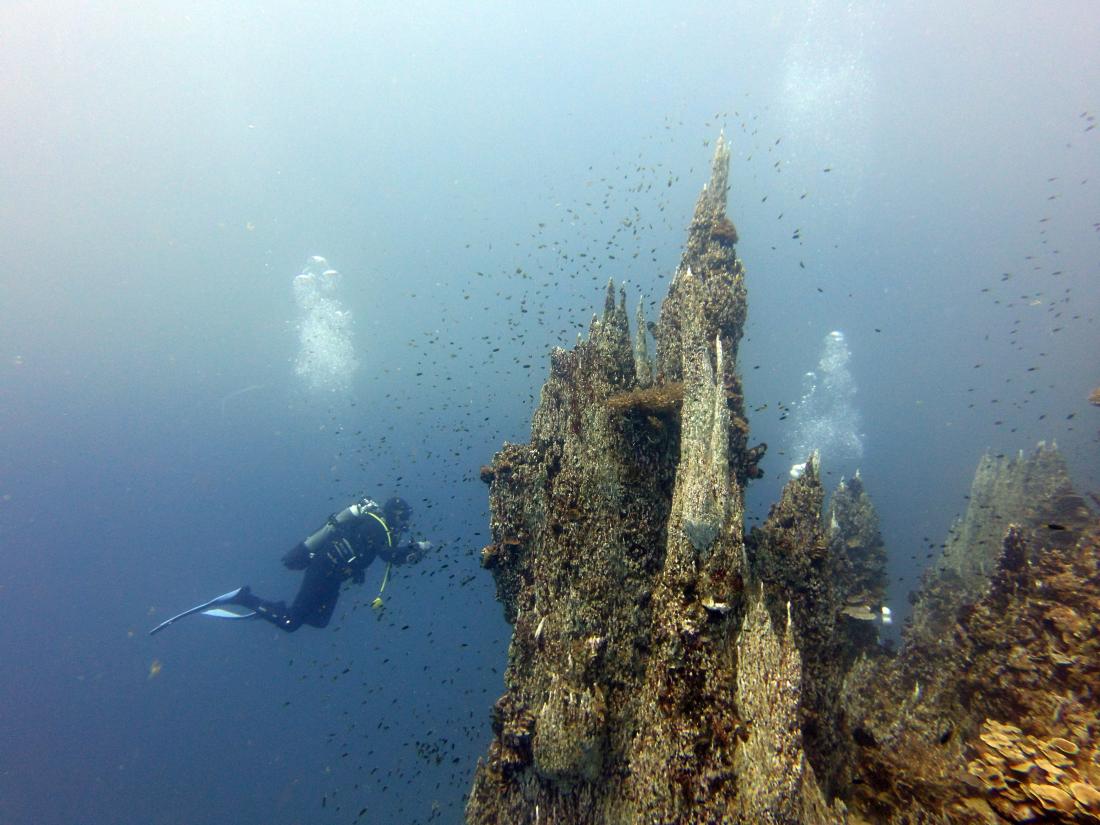Functioning of the microbial ecosystem of the Prony alkaline hydrothermal system, New Caledonia - ANR MICROPRONY (2020-2025)
PI: Gael Erauso
The aim of the MICROPRONY project is to study a unique shallow serpentinised alkaline hydrothermal system located in Prony Bay in the southern lagoon of New Caledonia.
The hydrothermal circulation at Prony is created by serpentinisation reactions at depth as meteoric water seeps through the peridotites, generating highly alkaline fluids rich in H2, CH4 and organic compounds formed abiotically. The characteristics of this system are similar to those of serpentinised springs on land (e.g. California, Oman) and underwater (e.g. Lost City).
The study of these systems provides important insights into the processes behind life on Earth.
The main objective The aim of the project - which builds on the results of our previous research on this site - is to understand how this ecosystem functions, focusing on the metabolisms using H2, CH4 and abiotically formed organic compounds.
Our working hypotheses are as follows:
- Prony microorganisms are specific to serpentine environments and have developed specific metabolic strategies to cope with the particular living conditions (few/no electron acceptors, very high pH, few/no DIC);
- Contrary to the widely shared hypothesis that microbial life in the subsurface is mainly due to chemolithoautrophy (the SLIME hypothesis), we propose that the organic compounds produced by serpentinisation reactions enable the growth of chemoorganotrophic bacteria (in particular those related to the Clostridiales or Phyla candidates such as Parcubacteria, Acetothermia, Omnitrophica) and possibly methanogenic archaea. These bacteria could therefore be major primary producers in this type of ecosystem.
To provide a comprehensive response to these two hypotheses, we are proposing a multidisciplinary approach led by a scientific team bringing together the best specialists in their field. This approach will incorporate cutting-edge analytical techniques covering a wide range of spatial resolutions.
It is subdivided into 5 main tasks:
- Identifying the main microbial players in the Prony ecosystem and elucidating their functions using cultural and molecular approaches (metagenomics);
- Characterising the age, nature and structure of microbial habitats, their associated microflora and microorganism-mineral interactions, using a range of techniques including isotope dating, molecular imaging (CLSM microscope coupled with Raman/FTIR spectrometry, FISH, SEM), microdissection and single-cell genomics;
- To describe in detail the fluid geochemistry for a reliable interpretation of the biogeochemical processes operating at Prony and to compare them with those of other terrestrial or marine serpentinized systems using a range of geochemical analysis techniques;
- Determine the relative importance of biotic vs abiotic production, particularly of CH4 and other organic compounds (HC, formate, etc) present in the fluids, using coupled isotope thermometry methods (13C and D);
- Modelling the key metabolisms of the Prony microbial ecosystem by integrating bioenergetics calculations based on the thermodynamics of metabolic reactions and geochemical data, and annotating metagenomes/metatranscriptomes.
Carrying out the scientific programme proposed here will enable us to exhaustively define the interactions between geochemical and microbiological processes in an environment that may have been common on Earth at the beginning of its history and that we can now compare with that of other planets in the solar system that are candidates for hosting extraterrestrial life forms (e.g. Europa, Enceladus).





